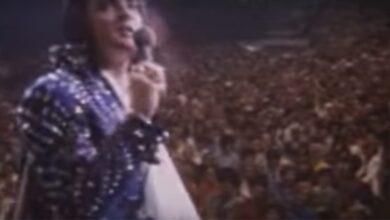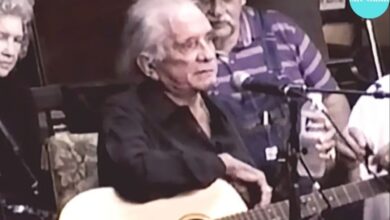Feel the Heartache in Dwight Yoakam’s “I Sang Dixie,” A Truly Sorrowful Country Classic
Dwight Yoakam emerged as a pivotal figure in country music during the late 1980s, bringing a fresh perspective that intertwined traditional country sounds with elements of rock and honky-tonk. His debut album, *Guitars, Cadillacs, Etc., Etc.*, released in 1986, laid the groundwork for his career, showcasing his distinctive vocal style and songwriting that resonated with a generation looking for authenticity in a rapidly changing musical landscape. His follow-up work, including the 1988 album *Hillbilly Deluxe*, further established him as a force in the industry, and “I Sang Dixie” is a hallmark of that artistic evolution.
“I Sang Dixie” stands out for its evocative storytelling, encapsulating both a personal narrative and a broader commentary on the South. The protagonist’s reminiscence about the Dixie culture serves as a metaphor for loss and recollection, illustrating Yoakam’s ability to weave personal experience into universal themes. The song’s vivid imagery and emotional undertones facilitate a connection with listeners, many of whom can relate to the feelings of nostalgia for their roots, reflecting the broader human experience of longing and connection to place.
The production of “I Sang Dixie” is another key factor in its effectiveness. Yoakam’s collaboration with seasoned producers and musicians allowed for a rich arrangement that compliments his vocal delivery. The use of traditional instruments, particularly the steel guitar, is a nod to the genre’s heritage while also employing a modern sensibility that makes the track accessible to a wider audience. This combination of classic and contemporary creates a sound that not only pays homage to country music’s past but also projects it into the future, reaffirming Yoakam’s role as a bridge between generations of country music lovers.
Yoakam’s style is characterized by his unique vocal timbre, marked by a distinctive blend of emotional rawness and technical precision. His ability to convey heartfelt emotion is one of the qualities that set him apart from his contemporaries. In “I Sang Dixie,” this is evident as he navigates through the emotional peaks and valleys of the lyrics, eliciting a strong emotional reaction from the audience. The sincerity in his performance resonates deeply, making the song relatable and impactful.
The song’s impact isn’t limited to its initial release; over the years, it has been covered by various artists, further illustrating its significance in the country canon. These reinterpretations often bring new dimensions to the song, showcasing its versatility and the strength of its core message. Each artist’s rendition introduces a fresh perspective while maintaining the integrity of Yoakam’s original intent, thereby ensuring that “I Sang Dixie” continues to reach new audiences.
Critically, the song has been lauded not just for its lyrical content but also for its instrumentation. The arrangement features a careful balance of melody and rhythm that enhances the storytelling aspect. The interplay between instruments creates an atmosphere that evokes the feelings of longing and resonance contained in the lyrics. This intricate musical landscape serves as the perfect backdrop for Yoakam’s narrative, allowing listeners to lose themselves in the story.
Throughout his career, Yoakam has been recognized with numerous awards and accolades, solidifying his status as an influential figure in country music. His contributions have extended beyond his own recordings, influencing a wide range of artists across genres. The blend of rockabilly and traditional country in his music has inspired a resurgence of interest in those styles, showcasing his role in shaping contemporary country music.
Moreover, Yoakam’s artistry know no bounds; he has also ventured into acting, demonstrating his versatility as a performer. His appearances in film and television have introduced him to a wider audience, allowing him to explore narratives and characters in ways that parallel or complement his musical storytelling. This cross-genre appeal has only added depth to his career and broadens the context in which his music is appreciated.
In the digital age, with the advent of streaming platforms and social media, songs like “I Sang Dixie” continue to find new life and new listeners. Music enthusiasts share their favorite tracks and performances online, often drawing attention to classic songs from artists like Yoakam who have paved the way for future generations. This ongoing engagement ensures that the essence of his music remains alive and relevant, speaking to the timelessness of his themes.
Ultimately, “I Sang Dixie” serves as a testament to Dwight Yoakam’s enduring legacy in country music. Its emotional resonance, combined with a profound sense of place and identity, encapsulates the very essence of what it means to be a storyteller in song. As new generations discover his work, the narrative woven into “I Sang Dixie” will continue to evoke feelings of nostalgia, belonging, and the reflective journey of personal and cultural identity that many cherish deeply.





